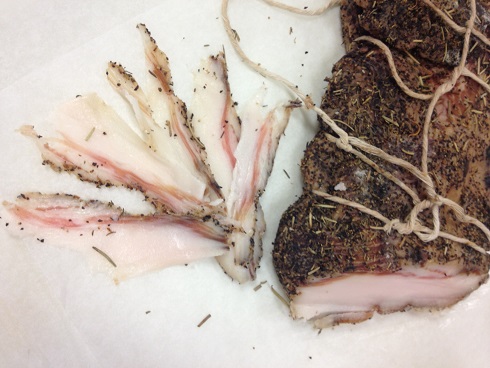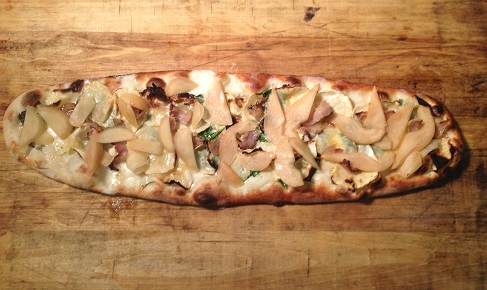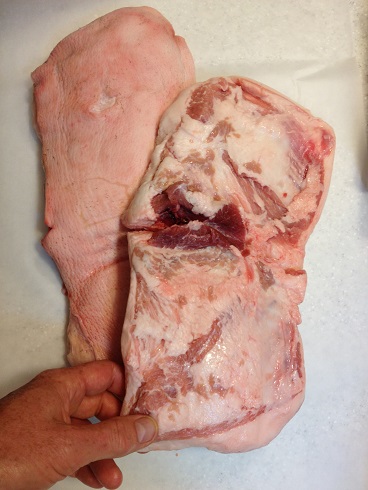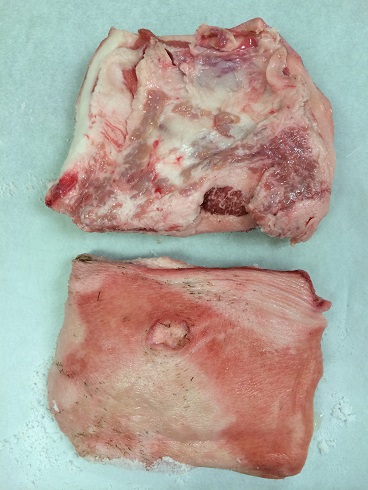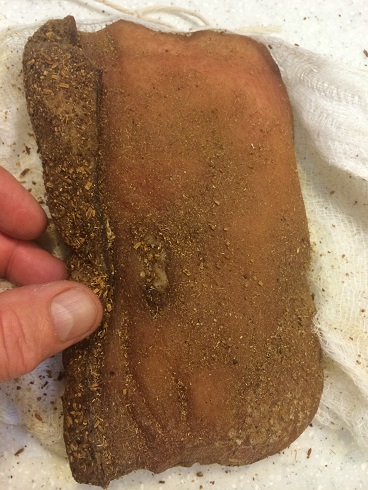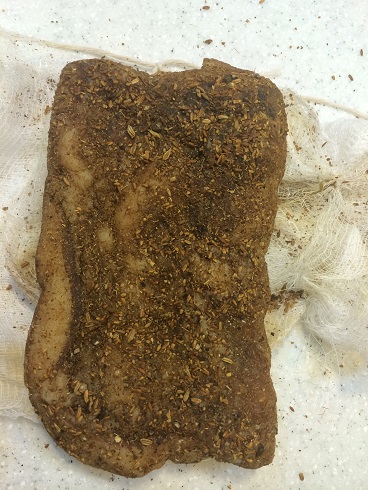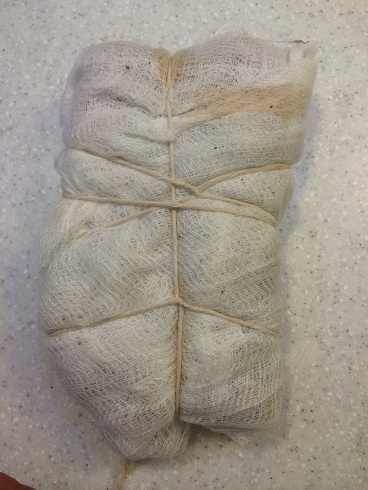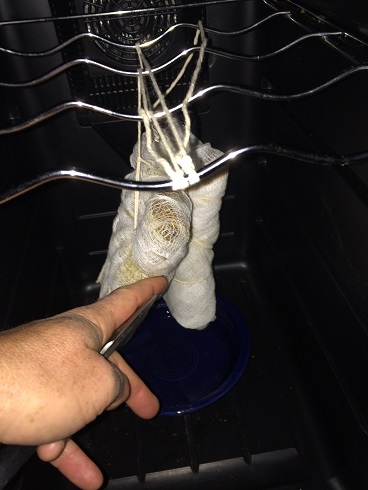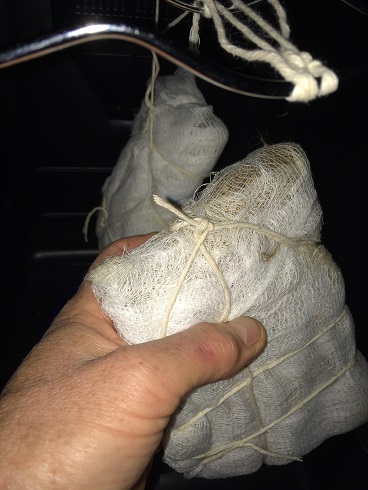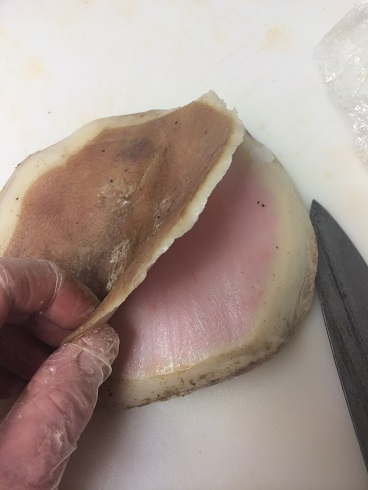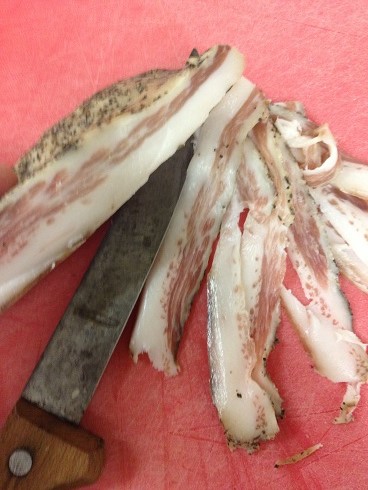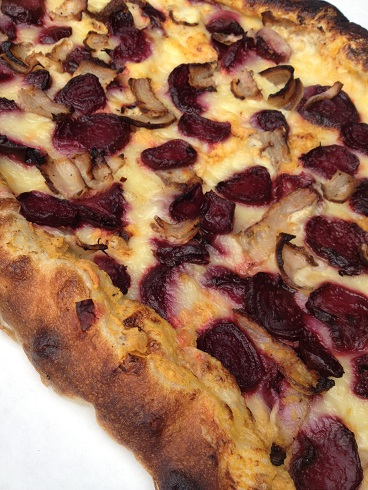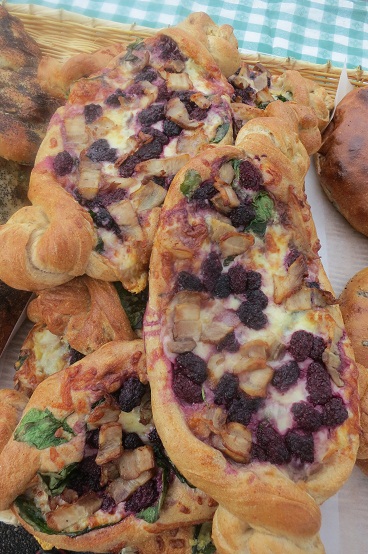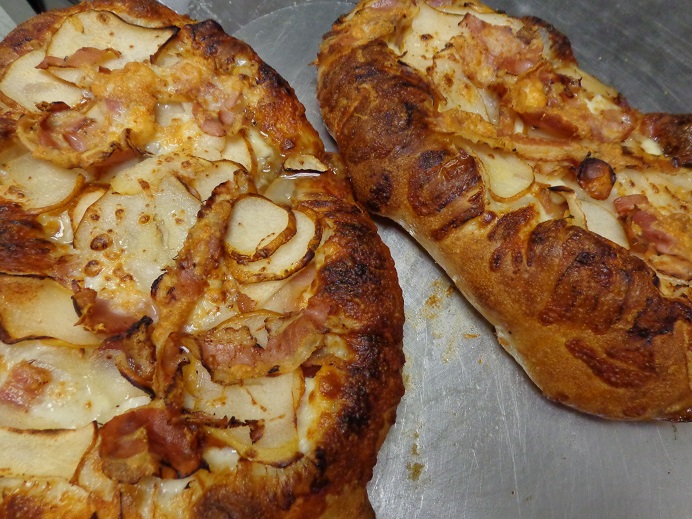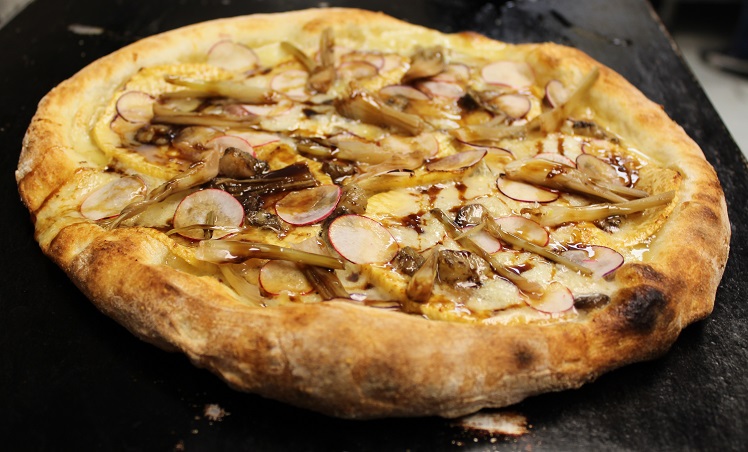
Winter is a great crisp season with plenty of cabin time to contemplate exactly what makes a fabulous pie. Gone are the playful distractions of summer and the bounty of all the great produce from farms around these parts. These cold months used to be the leanest times in the days of old as foods were either pulled from pickling jars in root cellars or fermented to lengthen the lifespan. These days, it seems that everything is so readily available as long as those giant fossil-fuel, tractor-trailers keep loading up our mega stores with foods from all over the world.
Convenience is the hallmark word of todays food system where terms like ‘Conventional’ has replaced ‘sprayed’ and “local” is relegated to tags referring to a distribution hub, not a field. (That’s you Kroger!)
I’ve decided to embrace three of the foods I’ve found outside in the these winter days of southeast Ohio; The Staghorn Sumac and a frozen Italian flat-leaf parsley plant along with some crisp radishes that my friend and teacher Keith Mcartney grew with his class at Federal Hocking High School. I’ve incorporated all three into a pizza with roasted bone marrow, Parmigiano Reggiano, and Teleggio.
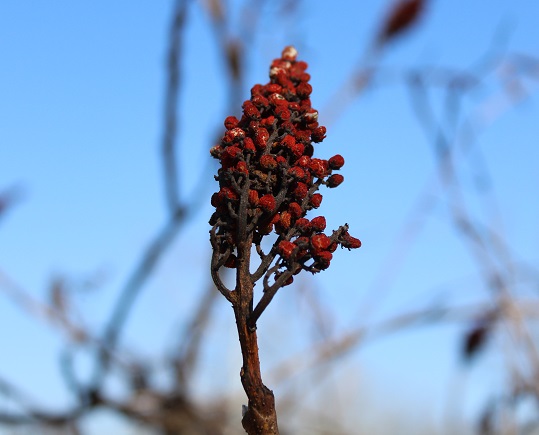

I started with the Staghorn Sumac as a tea. The sumac I collected was from atop a mountain in a forest in Vinton county right over where we saw some nice logs of bobcat scat. It was perfectly dried from the strong winds.
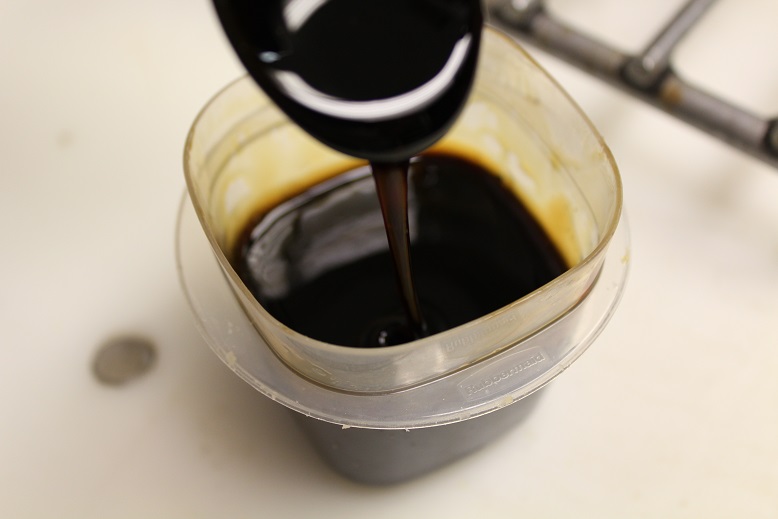
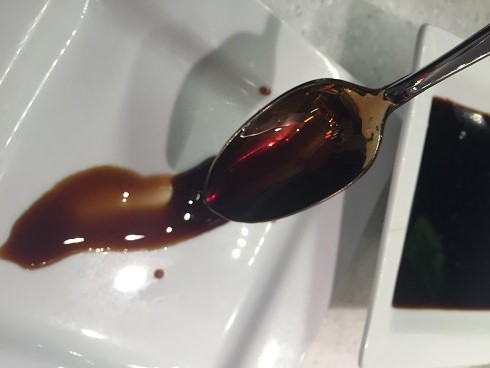
After rinsing the sumac thoroughly, I reduced it in a pot of boiling water brought to a simmer until the liquid looked dark and tasted like a sumac tea. I then strained the sumac and reduced the liquid by half. Then I added sugar and local honey to taste and reduced further for a wonderful balsamic like glaze, (above). This sumac glaze had a wonderful cranberry-pink lemonaide flavor with hints of raspberry and was very easy to make.
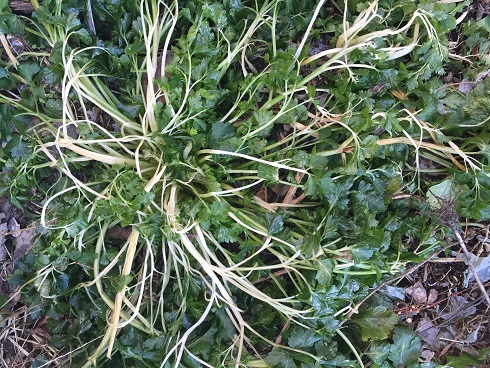
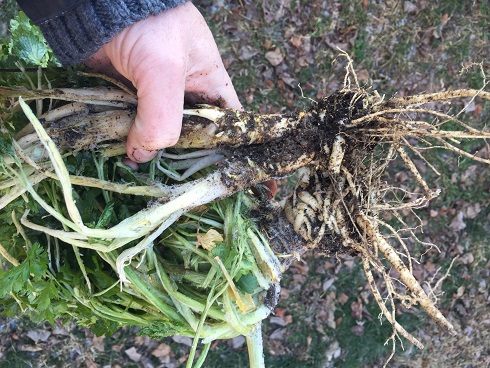
Now I wanted to use a frozen parsley plant that was lingering in my garden.
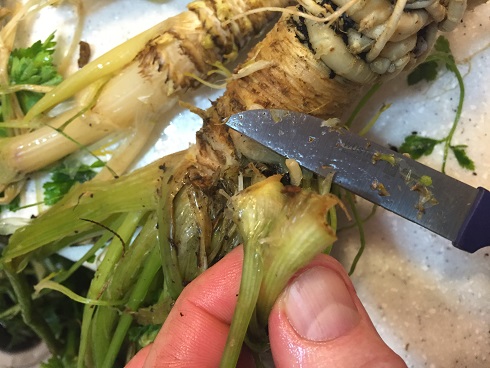
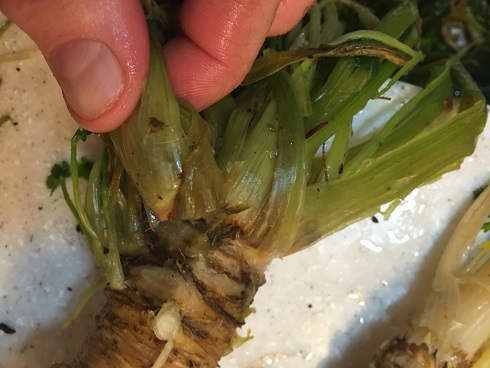
So I just yanked that baby up and went right after the “artichokes” that were growing off the hearty root bottom. These were crisp and tender.
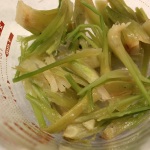
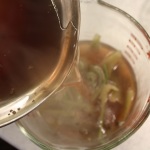
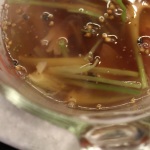
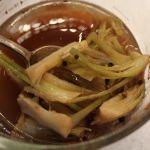
After cutting and cleaning these artichoke-like buds, I quickly heated a brine of apple cider vinegar, champagne vinegar, cumin seed, mustard seed, black peppercorn and celery seed with a little local Cantrell honey then poured it over the chokes and let them steep until they were pickled and ultra tender. I then refrigerated them
I then sliced the turnip thinly in discs and sautéed in extra virgin olive oil with a thin seasoning of salt and white pepper until tender.
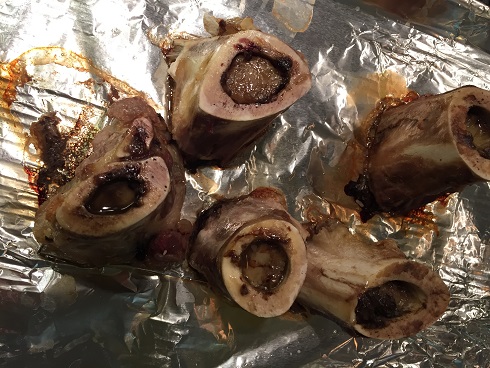
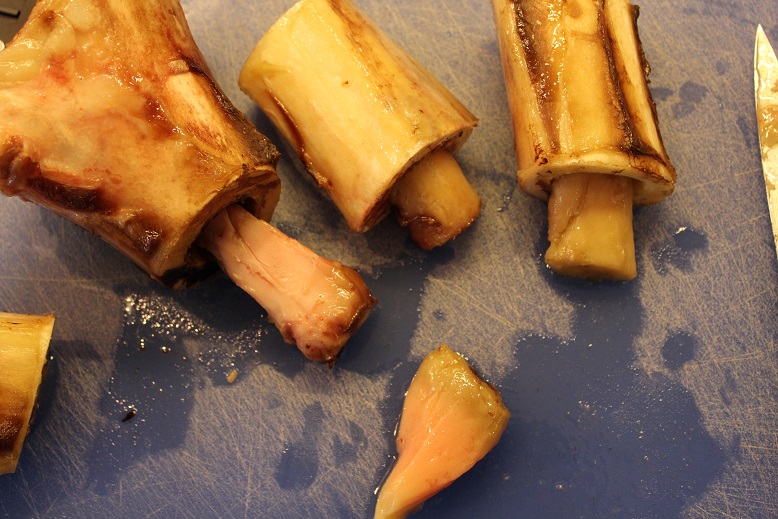
I took the marrow bones and placed in a pre-heated 450 degree oven for only about 12 minutes until the marrow was just loosened up. (Remember, this will cook on a pizza later.) Letting the marrow cool, I then coaxed it out with my finger and sliced for topping.
So now I was ready to make my pie.
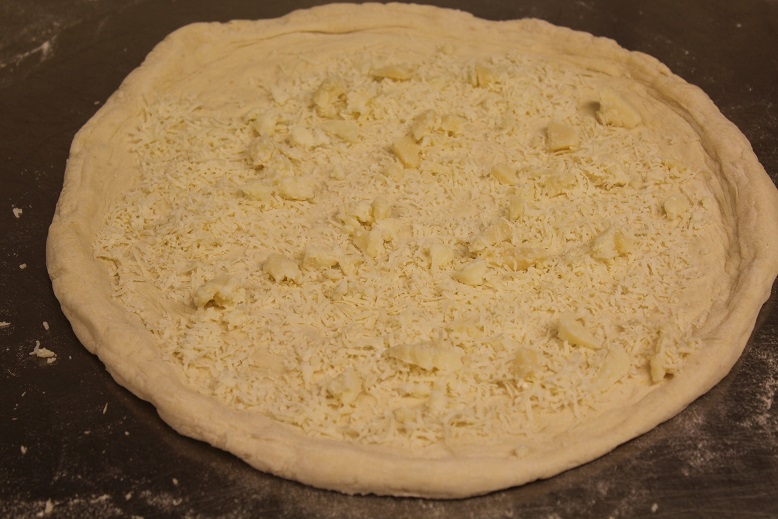
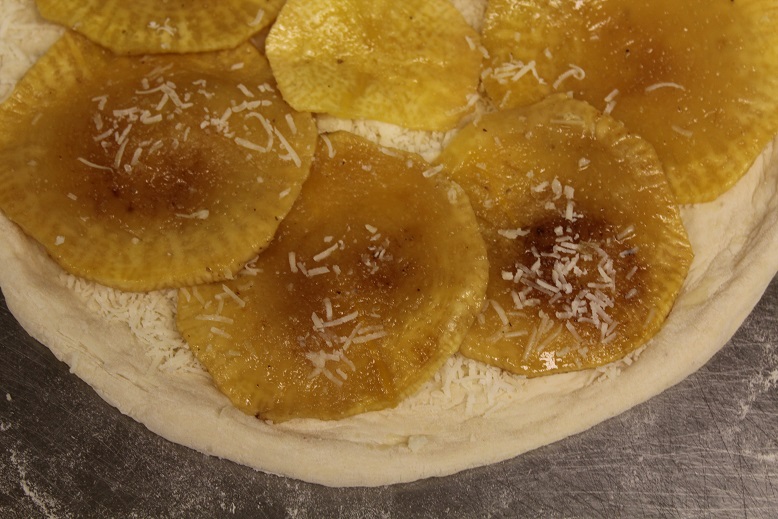
I first made sure my oven was at or above 600 degrees then topped my disc with the Parmigiano and the turnip discs.
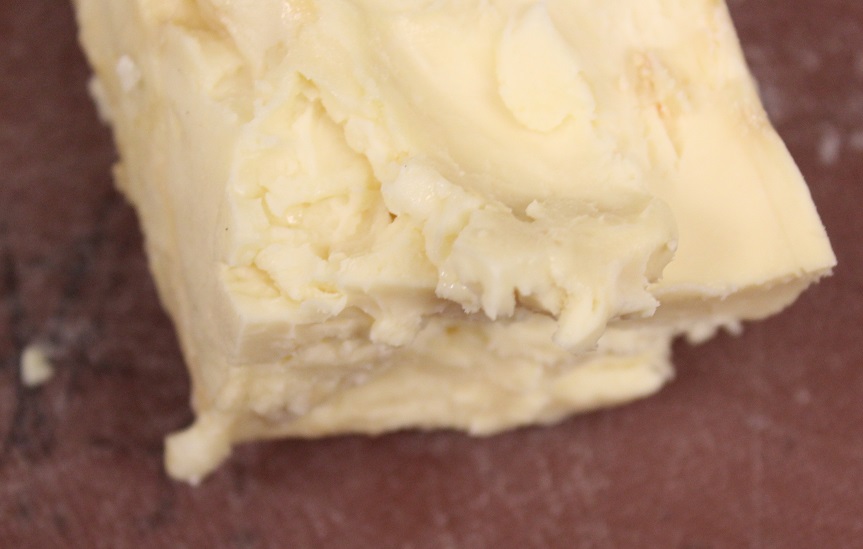
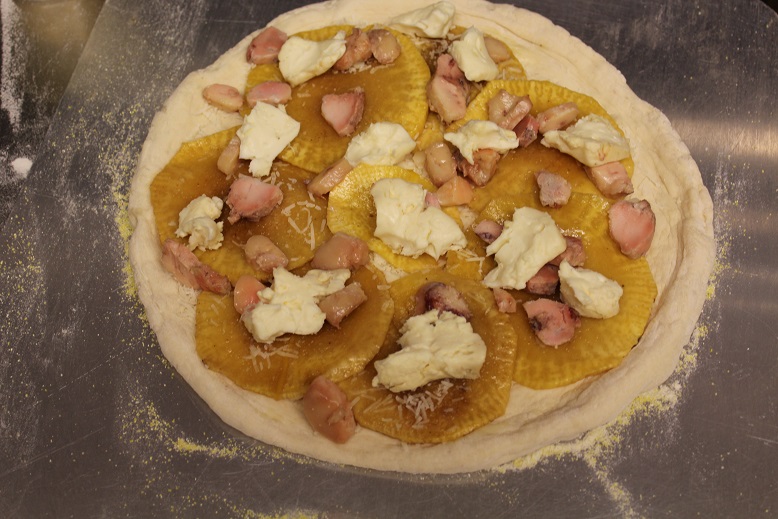
Then I topped with teleggio followed by the sliced bone marrow.
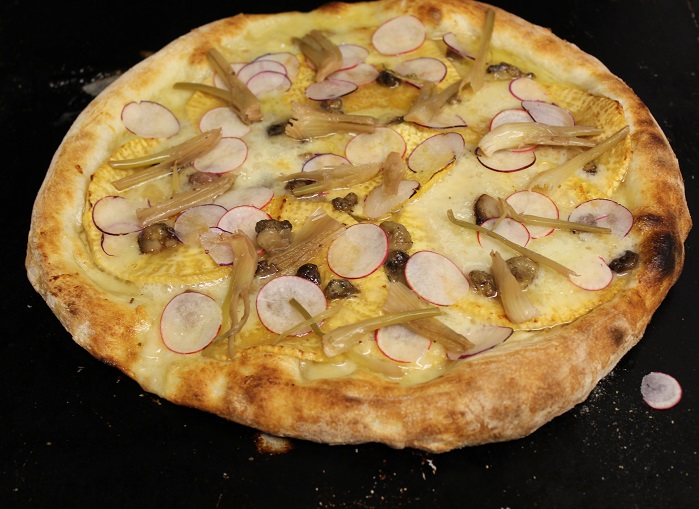
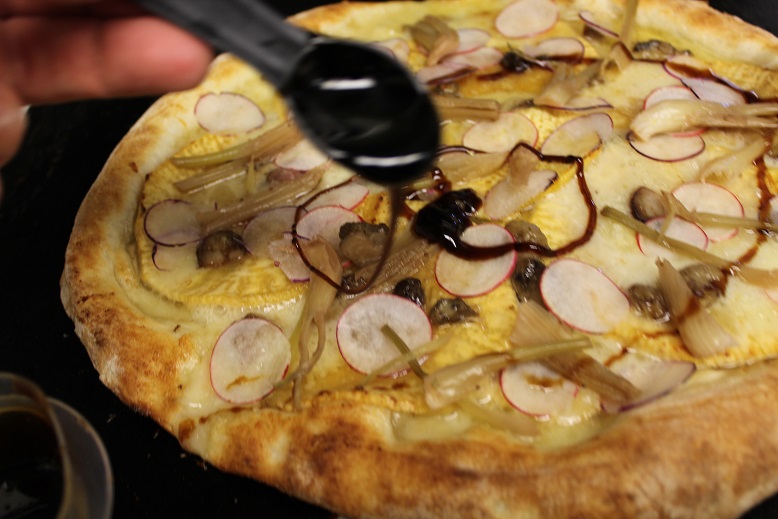
I stoked the this baby in the oven until nice, golden brown and crisp then I added Japanese-mandolin-sliced rasishes, the pickled parsley root artichokes and a nice swirl of the Staghorn Sumac glaze.

This pizza has it all for a great winter adjective chowfest! The creamy Teleggio melted in with the beefy marrow and meaty turnip followed by the lingering Parmigiano umami, the crunch of the radish and sweet and sour welcome of my wild friends of winter.

